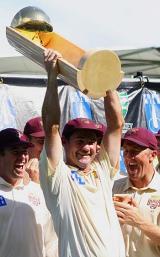Tall scoring, and centuries without boundaries
The regular Monday column in which Steven Lynch answers your questions about (almost) any aspect of cricket
|
|

|
Steven Lynch is the deputy editor of The Wisden Group. For some of these answers he was helped by Travis Basevi, the man who built Stats Guru and the Wisden Wizard. If you want to Ask Steven a question, contact him through our feedback form. The most interesting questions will be answered each week in this column. Unfortunately, we can't usually enter into correspondence about individual queries